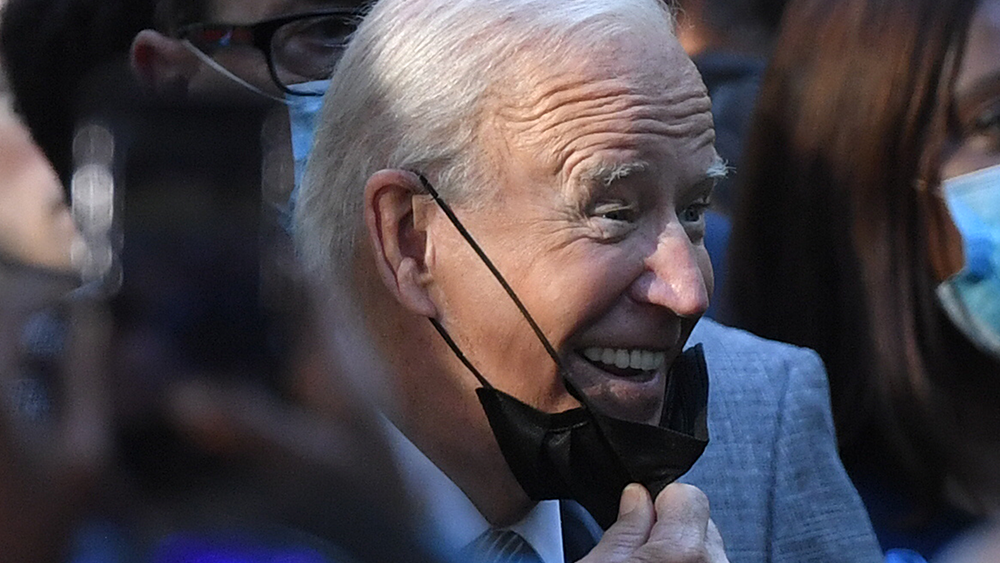Prices of used vehicles escalate as inflation spirals out of control across the US
11/12/2021 / By Matthew Davis

Prices of used vehicle prices escalated at a rate never seen before in history as inflation spirals out of control in the United States.
Demand shifted to used vehicle due to a crippling global shortage of computer chips and lower production of new vehicles. That combination resulted in a price increase of 9.2 percent in one month, which put the index 38 percent higher than a year ago.
Blogger and book author Michael Snyder of the EconomicCollapseBlog.com said for that to happen in just one month is simply breathtaking.
“If used vehicle prices rose by 9.2 percent for an entire year, that would be really bad,” said Snyder. Overall, used vehicle prices are up a total of 38 percent over the past year, and they are now up a total of 59 percent since October 2019. This means if you purchased a new vehicle within the past couple of years, it may now be worth more than when it was brand new.
Snyder blamed hyperinflation for the continued price rise of used vehicles. “I can’t imagine that used vehicle prices will continue to rise at an exponential pace like this, but ‘experts’ have been saying the same thing for months and prices just continue to accelerate.”
Used vehicle prices usually go down in October because of vehicle depreciation.
Supply chain woes wear down US auto garages
The challenge of finding spare parts as mundane as oil filters or carpeting has forced repair shops to hoard inventory, find workarounds and plead with customers for patience until a shipment comes in. Typical delays of a day or two have stretched into weeks in some cases, shop owners say.
It’s a self-feeding loop. A global semiconductor shortage has cut the production of new vehicles, leading to a surge in demand of used cars and forcing people to keep their old ones longer. In turn, these vehicles need repairs, which are now increasingly being dragged by supply-chain snarls.
In the Seattle suburbs, garage owner Bryan Kelley waited on parts for 60 to 90 days on two separate occasions while fixing pick-up trucks. One of the parts, a crankshaft position sensor, used to take a half hour to get from the distribution center, said Kelley, owner of Valley Automotive Repair and Electric. The wait got so long that the customer was ready to give up on his Dodge Ram 1500, he said.
“He went as far as to say, ‘I’m going to tow it and buy another truck,'” said Kelley, also the chairman of the Automotive Service Association Northwest trade group. “It got compounded when he found he couldn’t just go down and buy one.”
The $300 billion auto-parts and repair industry is facing widespread operational challenges, from spikes in the price of steel and other materials to workforce shortages and delays getting goods unloaded at U.S. seaports, said Paul McCarthy, chief executive of the Automotive Aftermarket Suppliers Association. (Related: Efforts to keep ports open 24-7 to reduce cargo ship backlog aren’t going to work because insane trucking regulations in Dem-controlled California are keeping trucks off the road.)
No garage is being spared, whether franchise dealers who get their parts from the major automakers, independent warehouses or small corner garages, McCarthy said.
“This is the most difficult supply-chain environment that I have ever seen,” AutoZone Inc. Chief Executive Officer William Rhodes said in a September earnings call. AutoZone is running “the lowest level of in-stock that I can ever remember,” said Rhodes.
For now, mechanics on the front lines are having to get creative while keeping car owners calm as they break the bad news. It helps when so many of these clients have experienced pandemic-era shortages of all sorts of products in the past year and a half.
In the Philadelphia suburbs, Lisa Matlock’s Nissan Sentra got flooded when Hurricane Ida pummeled the Northeast in early September, leaving the interior a soggy and reeking mess. “I can’t begin to tell you what the smell was like,” Matlock said.
Unable to find replacement carpeting, the mechanics at Colket Technical Services in Lansdale, Pennsylvania, did the next best thing by ripping out the existing carpet, having it professionally cleaned and putting it back in.
Matlock was understanding when shop owner Ross Colket explained he couldn’t find carpeting anywhere. As a convenience-store worker, she can’t even find plastic containers for her shop’s grab-and-go sandwiches lately.
“I wasn’t surprised or flustered that Ross was having trouble finding carpet,” Matlock said. Hoarding has become a common practice for particularly sought-after items. “Oil filters are becoming harder to get, so when I buy them, I buy them in as big of quantities I can get,” said River Road Auto Service manager Danny Tomasian in Bethesda, Maryland.
Follow Collapse.news for more news about inflation and supply chain disruptions.
Sources include
Tagged Under: auto garages, automakers, Bubble, car parts, chaos, Collapse, heating oil, hyperinflation, Inflation, market crash, price hikes, products, supply chain crisis, used vehicles
RECENT NEWS & ARTICLES
COPYRIGHT © 2017 RISK NEWS

















